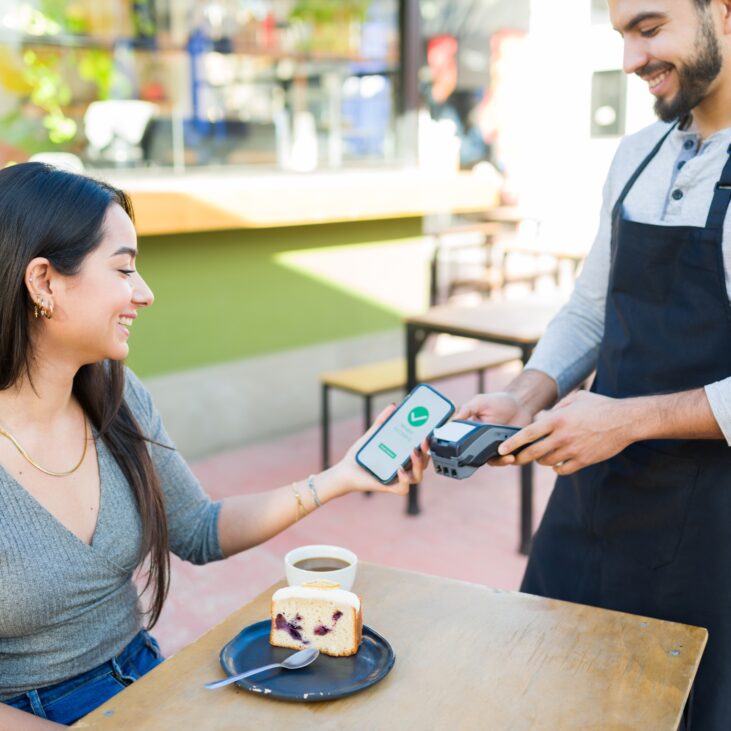Takeaways
- Savings accounts are an excellent place to store extra cash.
- You should consider fees, APY, and other criteria before choosing a savings account.
- High-yielding savings accounts can earn interest income and boost savings.
- The technology suite of the bank could be a tiebreaker feature.
- A bank or lender’s customer services reputation should be heavily considered.
You might be looking for a safe place to stash your excess cash. If you have set financial goals and started following a budget, you could find yourself in a situation with high levels of discretionary income and a surplus of cash. Choosing the right place to store your money (not under your bed) is an integral part of your savings journey. Sophisticated savers and investors place their money in products that grow their money over time. A highly reputable savings account checks all the relevant smart money boxes.
What is a Saving Account?
A savings account is a product from a bank or other financial institution that allows you to earn interest on your deposits. Properly insured savings accounts are considered safe and reliable, making them great places to put your excess cash. These accounts typically pay depositors an interest rate on their funds and can offer high interest rates depending on the broader economy and inflation. Opening a savings account as a haven for your excess cash while your money earns interest can boost your investment income.
6 Steps to Open a Savings Account
Opening a savings account is a big decision. There are hundreds of online savings accounts to choose from which can make the process a little daunting. Rest assured, however, that the tactical part of opening a saving account is straightforward. Here is a step-by-step guide on how to open a savings account today.
1. Do Your Research
Not all banks are created equal. Each bank has its personality, target market, and level of support for its customers. There is a very different feeling between banks such as Wells Fargo and Capital One. While their services might seem similar on the surface, the customer experience offline and online can make the user experience worlds apart.
Smart Money -> 9 Ways to Earn Passive Income in 2024
You want to choose the right bank that checks all your financial boxes. Selecting a bank that fits your financial needs should remain paramount throughout this process. Here are some key banking features to consider when evaluating your options.
- Minimum account balance requirements
- Accessibility to ATMs
- Annual Percentage Yield (APY)
- Maintenance or monthly fees
- Mobile and online banking solutions
- FDIC insured deposits
Prioritize what account features are the most important to you. Are you trying to maximize interest income on your savings? Then selecting a high-yield savings account makes sense. Maybe you are more concerned with the ability to remove deposits from your account. In that case, ATM availability and online and mobile services could reign supreme.
Do you already have a checking account at a bank? If you are happy with your checking account, it could be a quick win to set up a savings account with your current bank. We would encourage you to shop around for the best savings accounts available. You might be surprised what you are missing out on.
2. Collect Documents
Overall, the documents needed to open a saving account are relatively standard. If you are filling out this information online, you might have to upload some documents to verify your identity. Otherwise, be prepared with documents for an in-person meeting.
Here is a list of documents typically requested by banks:
- Driver’s license or passport
- Date of Birth
- Social Security Number
- Current Address
- Phone Number
- Email Address
Depending on the bank, more documentation may be required to open your saving account. Contact a customer service representative to ask for an exhaustive list of required documents, or call your local bank branch.
3. Select an Account
One of the main features about your bank account you will need to decide upfront is whether you are opening an individual or joint savings account. Here are some defining features of each type of savings account.
Individual Savings Account: You are the only person listed on the account with the authority to transfer money in and out or sign checks or other payment instruments. You are solely responsible for overdraft and bank fees.
Smart Money -> What is Interest: Definitions and Examples
Joint Savings Account: This savings account is in the name of two or more people. Usually, the named account holders can make transactions, including withdrawals, deposits, and sign payment instruments. You can decide upfront which of these transactions will require joint consent. Some joint saving accounts can range from allowing two people on an account to as many as nine name account holders [1]. Joint account holders are equally responsible for transactions made through the account. Be mindful of who you are sharing an account with. Limiting access could be a smart money move.
Smart Money-> Best Online High-Yield Savings Accounts
Smart Tip:
Joint savings accounts can be very helpful for couples trying to meet a savings goal like saving for an emergency fund, slush fund, or down payment for a house. Joint savings accounts help tactically facilitate the shares of expenses for households.
4. Fund Your Savings Account
Many savings accounts will require an initial deposit, especially if you are trying to take advantage of a savings account offering promotional periods for free money. Depending on the bank account, you can fund the account with an in-person cash deposit, check, money order, or electronic transfer or transfer from a linked account (if you are setting up a savings account with the same bank as your checking account).
Smart Money -> Need More Money? Try These 29 Side Hustle Ideas
Funding your account is not a one-time event. Personal finance experts recommend setting up direct deposits or recurring transfers to your savings account to boost your holdings. For a high-yield savings account, this can be helpful when your goal is to earn as much interest income as possible. Budgeting strategies, like the 50/30/20 budget, can help you allocate as much as 20% of your monthly budget to your savings account.
Be aware of your account’s minimum monthly balance requirements. Some savings accounts will charge a maintenance fee if your savings dip below a few hundred dollars. You can try to get this fee waived for the first few months or call the bank to reverse these fees if you have been a good customer.
Smart Money -> 12 Ideas to Make Money In Less Than One Hour
5. Formally Apply
Once you have gathered all the necessary documentation, you can upload that information onto the bank or institution’s online portal or submit it in person to the bank representative. Most banks only take a couple of business days (1-2) before formally approving the account and providing you with login information to your mobile application or online banking portal.
With your account information, you can begin making transfers to your account to boost your balance.
6. Set Up Online Banking
Mobile banking is extremely convenient. Whether at a concert, the grocery store, or driving in your car, online banking makes it super easy to transfer funds, check your account balance, and easily manage your account.
How to Select the Best Savings Account
Annual Percentage Yield: A bank account’s APY reflects the total amount of interest paid on an account’s balance based on the interest rate and frequency of compound within a year. The higher the APY, the faster your savings will grow. With increasing interest rates, APYs have also increased, allowing you to earn more income with your idle savings. This is a great opportunity to earn interest income on your savings and have them grown in a secure savings account.
Smart Money -> 5 Amazing Smart Money Savings Habits to Start Now
Fees: There can be many banking fees associated with a savings account, most of which you can get waived when you set up your account. These fees can unnecessarily erode your savings, so it’s essential to ensure they are waived upfront.
- Minimum Balance Fees – Banks make money by you keeping your cash in your savings account. To them, the best customers are the ones who fund an initial amount and keep on funding over time. If an account balance dips below a certain account minimum balance it can be costly for the bank to maintain your account. Check the fine print on your new savings account to ensure you can maintain the minimum balance requirements.
- Overdraft Fees – Overdraft fees occur when you transfer or use too much of your savings account balance. These fees could result from poor financial planning or miscommunication with a joint account holder. To avoid these fees, you can set up your account to pull from another savings account if you have insufficient funds.
- Close-Out Fees – If you want to close your account right after you open your account – typically within 90 -180 days of account opening – some banks will try to charge a close-out fee. Watch out for these fees and ensure you are opening a savings account with a bank that has earned a great reputation. You want to be able to bank there for a long time.
Smart Money -> 10 Best Ways to Invest $1,000
Reputation: Reputation matters even for banks. Larger well-established banks have a way of doing business, and it is crucial to understand their reputation for customer service ahead of time. Chasing a high-yielding savings account can seem like the easy choice, but if the bank is new or relatively unknown, it might not be the best option. Shop around for the best and most reputable savings account possible.
Ease of Access: Everything is mobile, or at least it should be. Banks that offer easy-to-use and intuitive apps appeal in droves to younger consumers in their 20s and 40s who are constantly on the go. In-person banking has been declining for decades, so ensure your savings account comes with fantastic technology.
Smart Summary
Setting up a savings account that is best suited for your financial goals only takes a couple of minutes. It might take a couple of business days to get everything fully up and running, but much of the work is done by choosing the best savings account. Do your due diligence and optimize for what is most important to you – capitalizing on promotional offers, ease of mobile banking, high-yielding accounts, or access to ATMs. Having multiple savings accounts to support your short and long-term savings goals is a smart money move. Contributing to your savings account consistently is even better.
(1) TB Bank. Single Vs. Joint Account: What it is and why you should open one. Last Accessed January 24, 2024.









